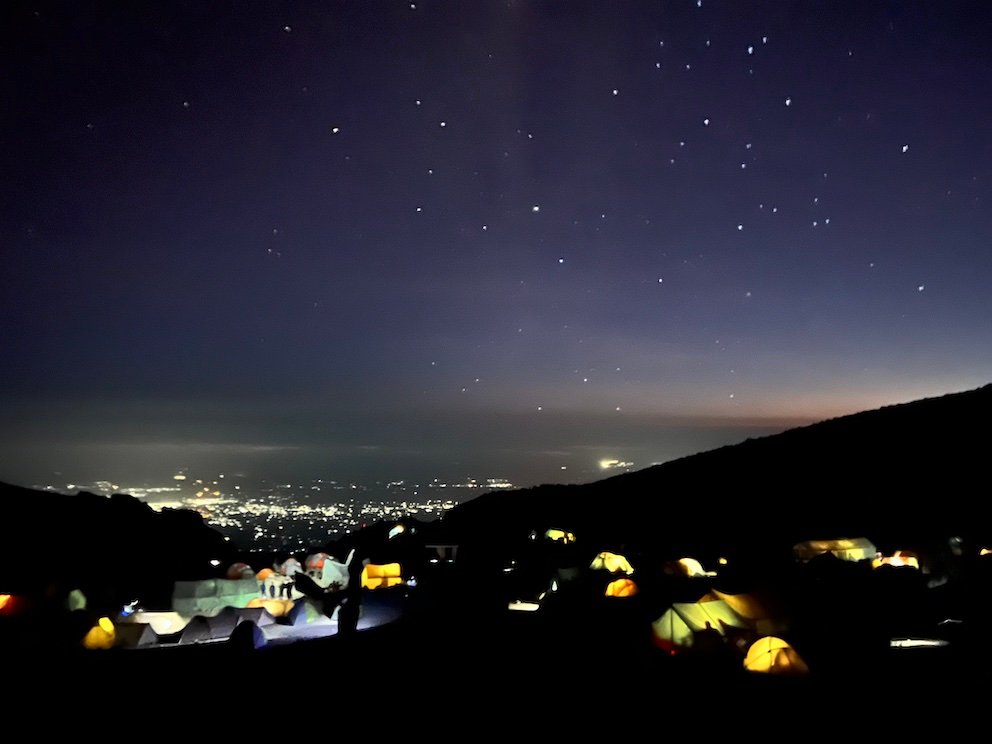Day 3 is an acclimation-building day on Kilimanjaro as we ascend 800M from Shira Camp to the Lava Tower at 4600M, but then descend back down to 3950M at Barranco camp. Following the principle of climb high, sleep low.
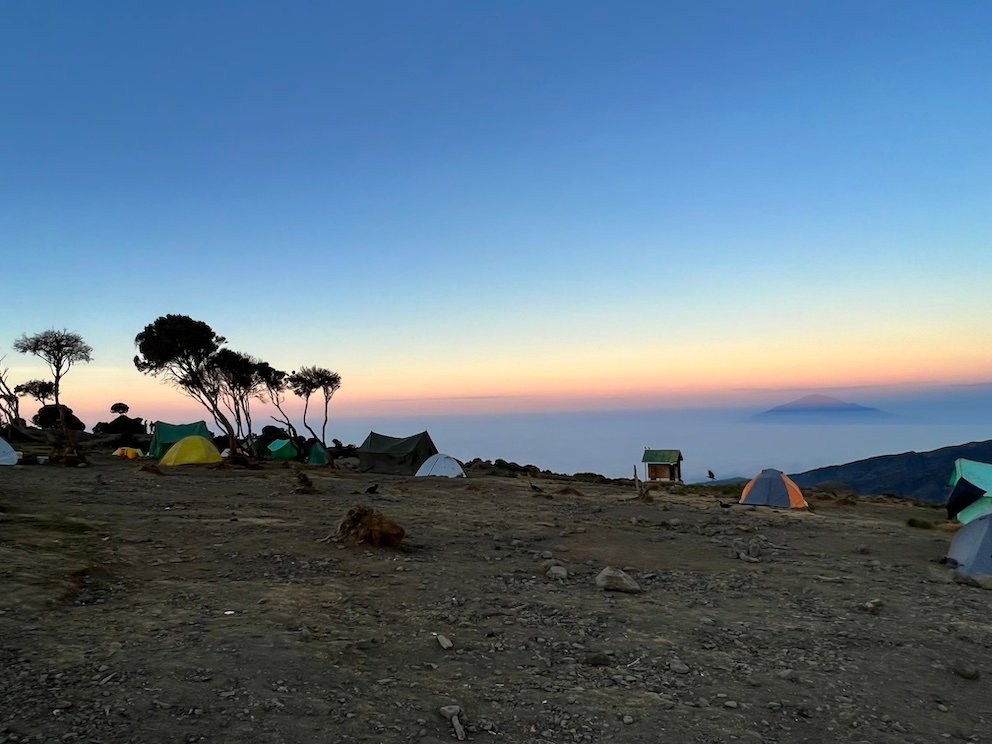
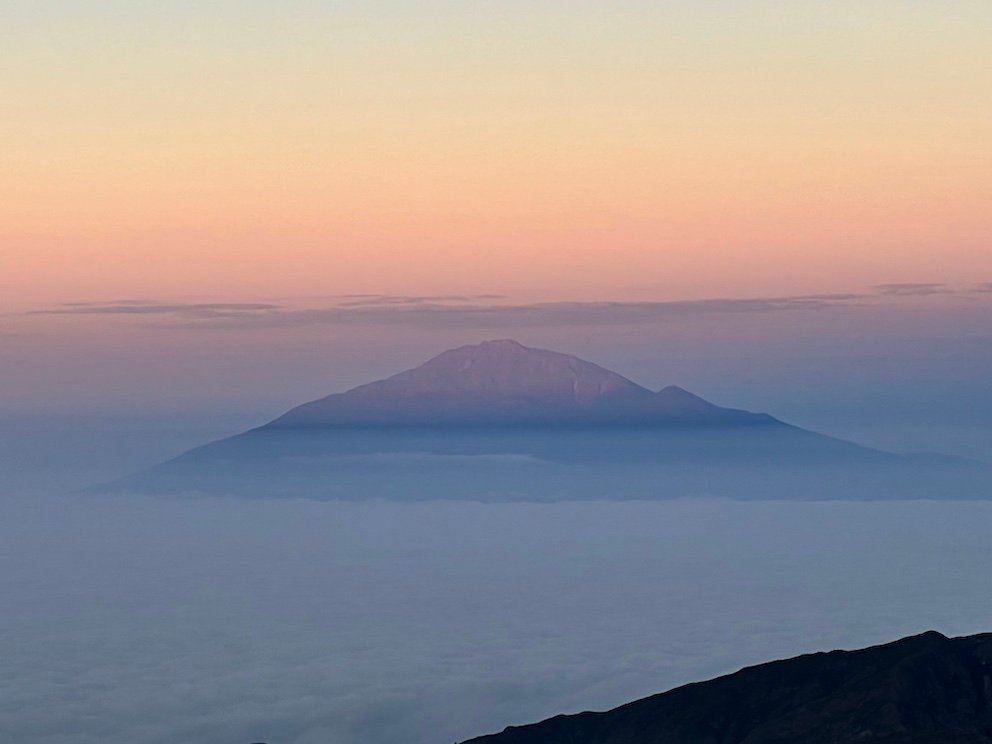
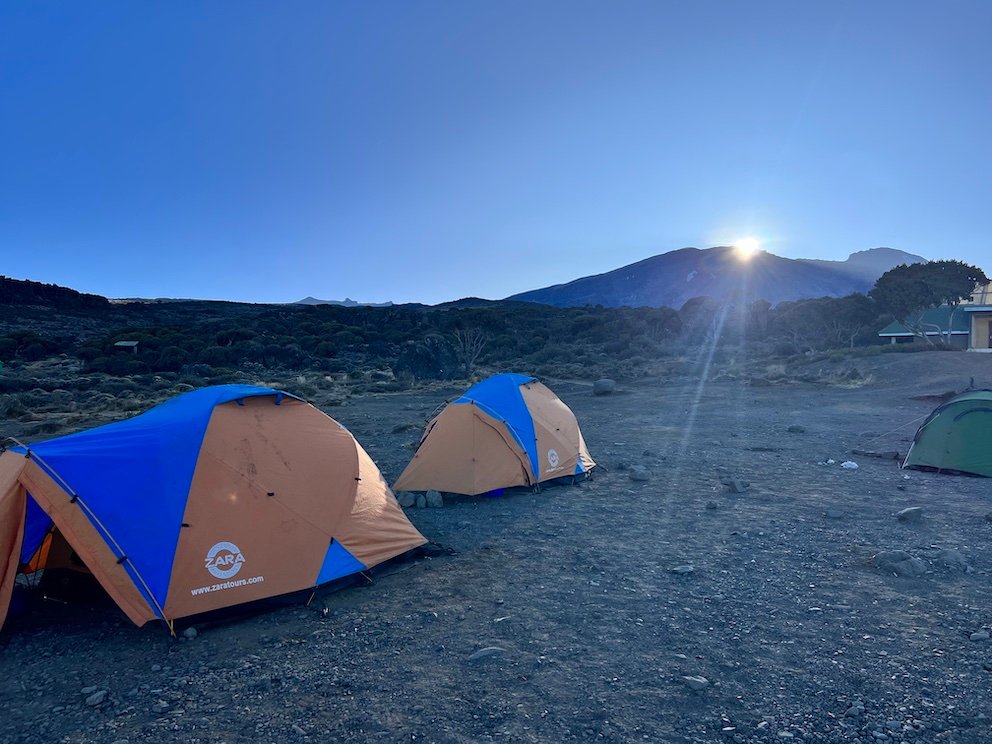
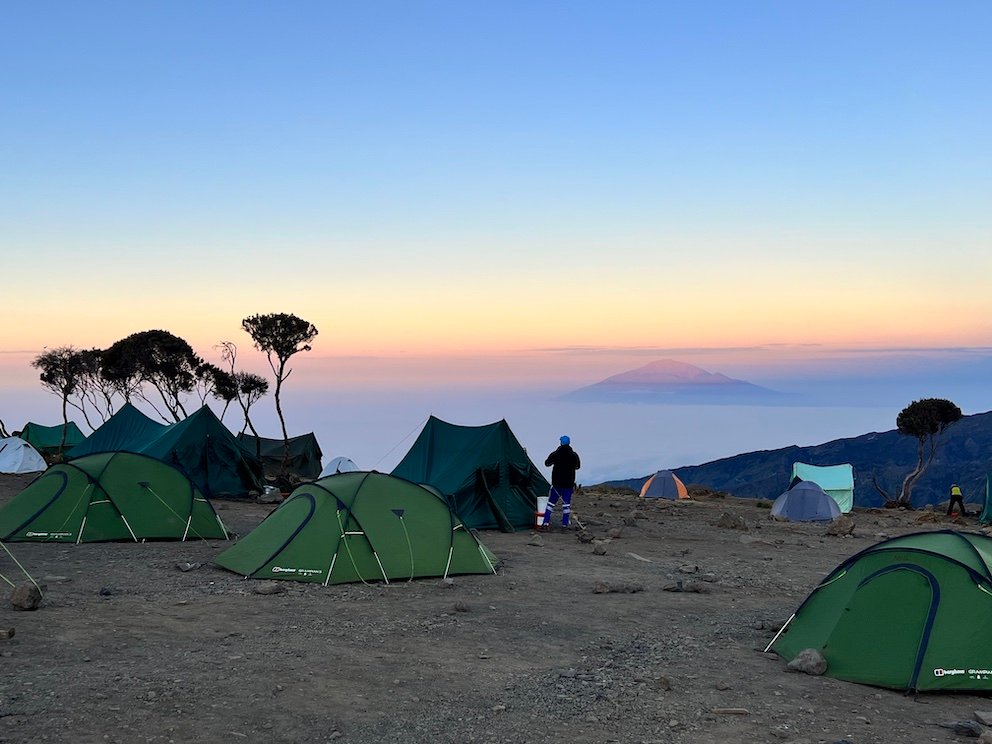
The day starts at 6am, with our wash basins being delivered to our tent, packing and breakfast being served at 7am. We are treated to the glorious sight of the sun rising over Kilimanjaro over breakfast, and basked in the warmth of the sun’s rays as we left Shira camp around 8am.
The 800M ascent to the Lava Tower took 4 hours, we went pole-pole, very slowly. As we left camp, a group of French trekkers passed us walking quite briskly and one of the men mockingly said “pole-pole” in a slow exaggerated fashion and smirked at us as he rushed by. We eventually caught up to this man at the 4600 mark and saw him crumpled in on the side of the trail – unable to go further.
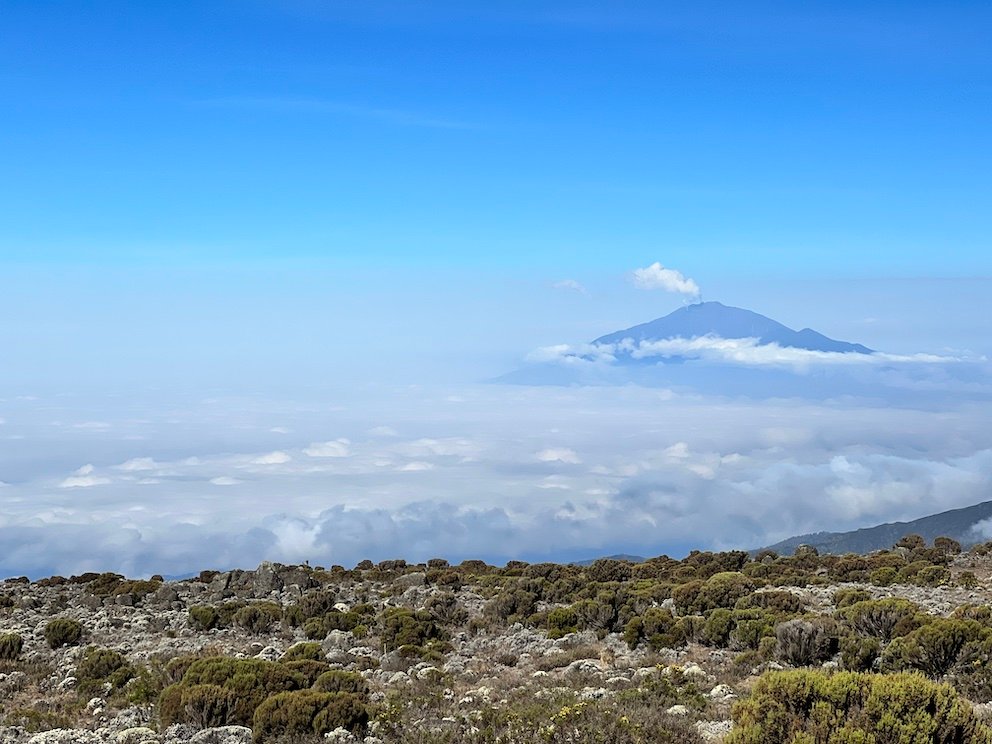
I was so glad Victor took the ascent so slow, it made the climb feel like an absolute breeze. The most experienced guides will reign in their groups to really go slow for their own good. The French man’s group breezed ahead of us quickly at first, and their guide let the group set the pace rather than slow the pace down – but they were quite quickly sitting on the side of the trail out of breath, and struggling by time they approached the Lava tower. I did not see this group again after this day.
The Lava Tower is a striking 90 meter high tower of rock that juts imposingly in the backdrop of Kilimanjaro’s Martian landscape at 4600 meters. The tower was formed 150,000 years ago when a powerful surge of Lava exploded out of Kilimanjaro – which was then an active volcano. The Lava cooled – leaving behind this imposing 90 meter tower of rock. The Lava Tower is a famous land mark on the Kilimanjaro trek, and a number of different treks converge here including Machame and the Lemosho treks. Some stay just for lunch, and others on longer treks will spend the night at the site. Accordingly this site gets exceedingly busy with all the lunch-break trekkers coverging at the site along with those who will be staying the night.
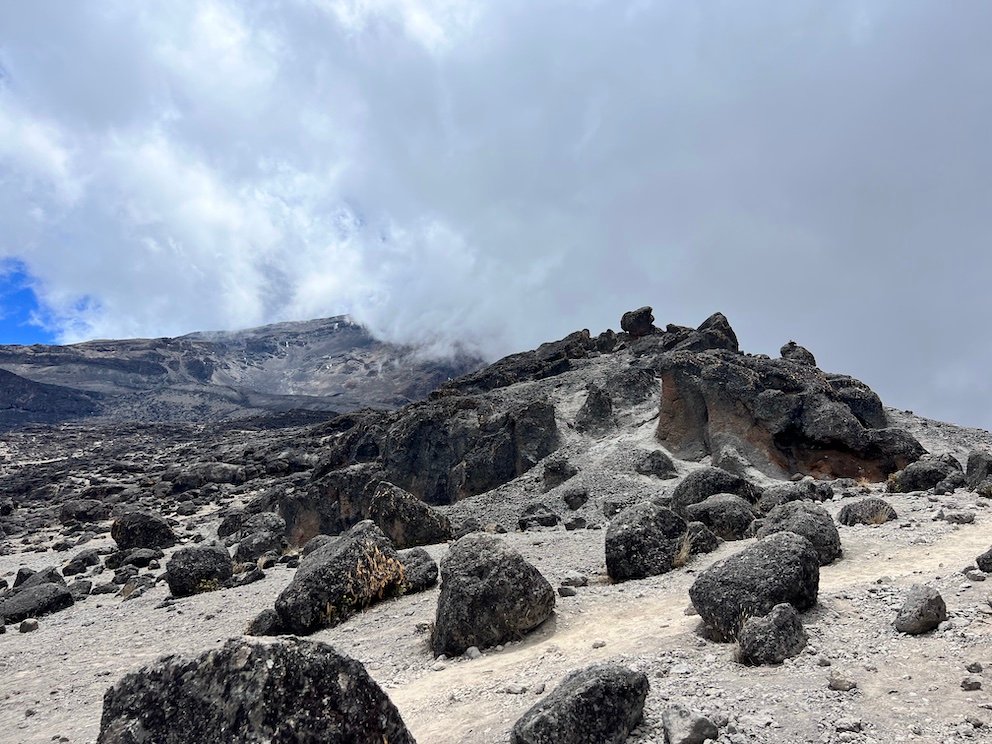
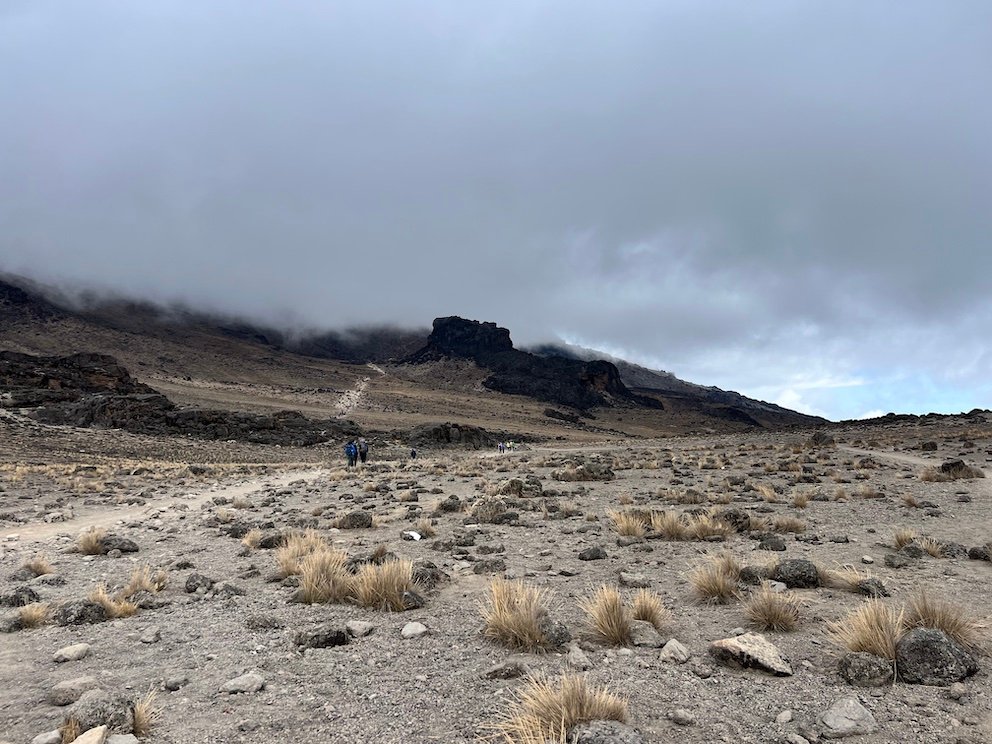
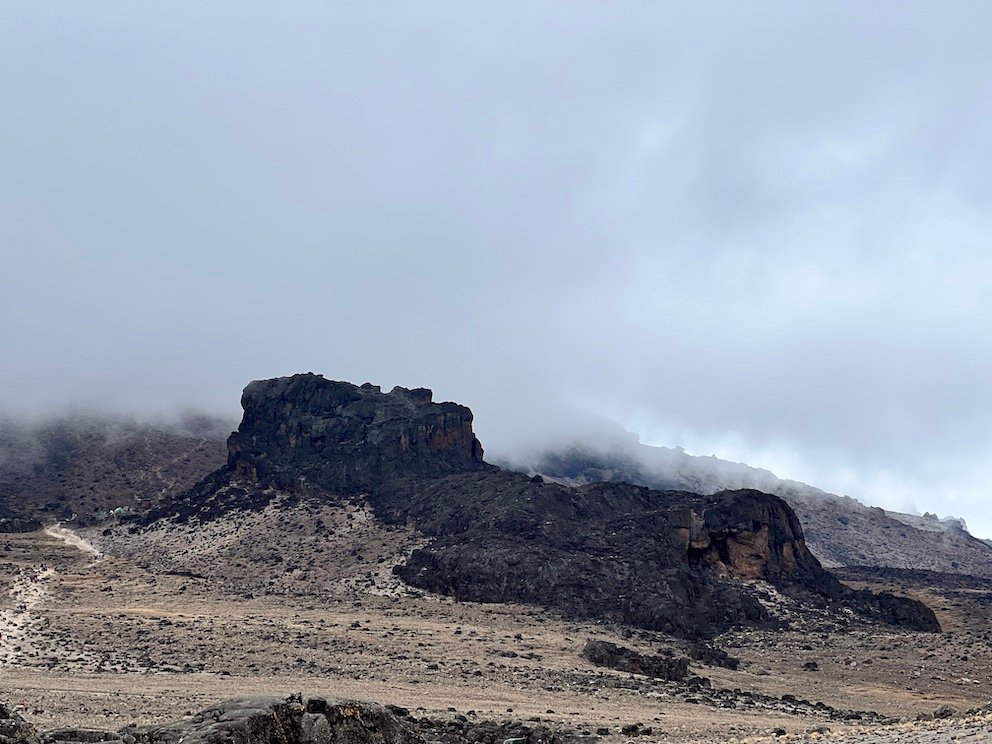
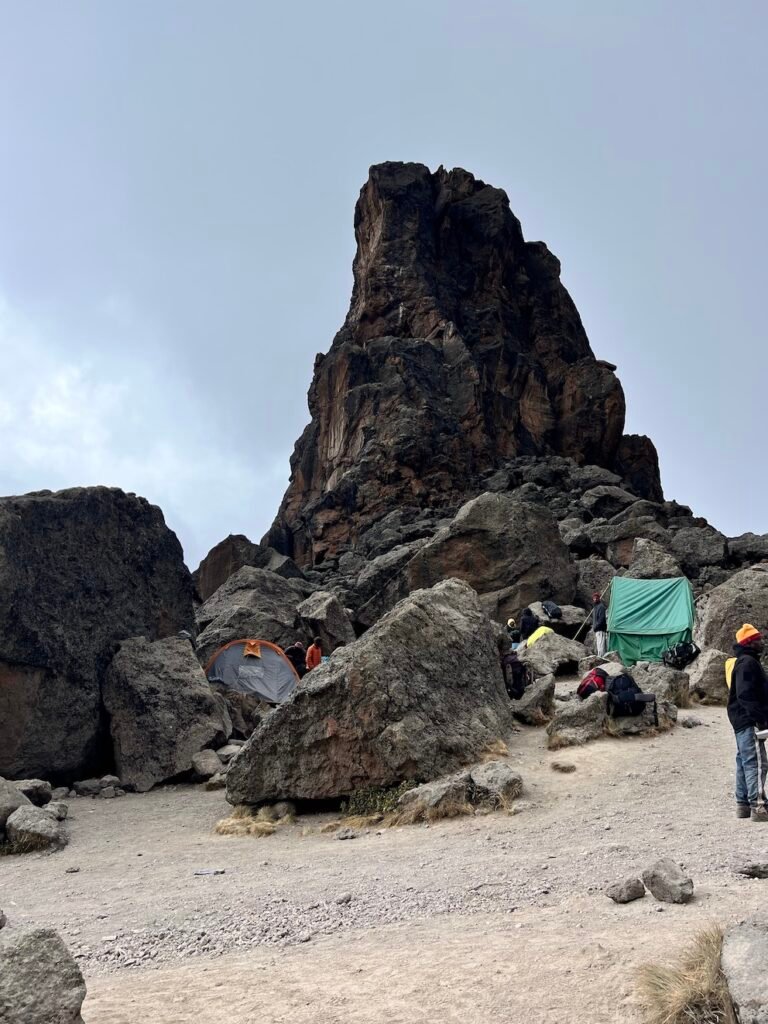
Impressively, our team, had set-up our lunch tent at the Lava Tower site and an amazing lunch of vegetable soup, and an African chicken with potatoes and plantains dish was served to us within a few minutes of our arrival.
The sun came out briefly to warm us up at the Lava Tower, but as soon as it disappeared, the temperature dropped precipitously. I layered up and even put on my ski gloves for the first time during the trek as we started our descent to Barranco camp.
The descent to Barranco camp was probably one of the more difficult sections of the trail thus far. The trail was full of rocks, pebbles and loose gravel that often gave way as you stepped down with some velocity on the descent. I saw more than one porter slip on this section of the trail – where I saw none of these sure-footed individuals so much as wobble on previous sections.

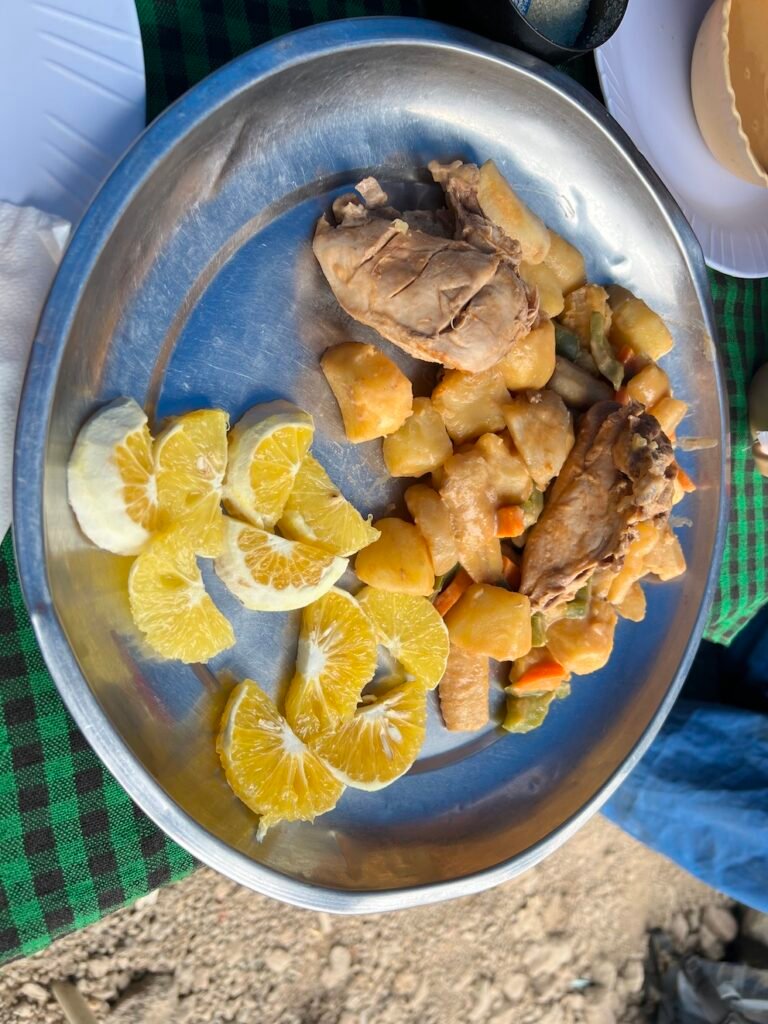
A thick fog shrouded much of the trail as we descended, but one consolation was seeing the Giant Groundsel – which only grow on Kilimanjaro and only above 14,000feet in elevation – begin to appear in large numbers as we approached Barranco camp.
A few droplets of rain had started to fall from the foggy skies, so Alberto and I rushed to get to our tents before we ended up getting wet – it was unlikely anything would dry at this point – and we needed our things to be dry for summit night.
Many routes – Machame, Lemosho, Rongai – converge on Barranco camp, so the site was a veritable zoo of tents. Alberto and I had been lucky thus far with our team being able to set up our camp close to one of the outhouses, but this time, we had to basically hike 100 meters over a ridge to get to the closest toilet.
The camp was a maze of tents – and one could easily get lost at night. At some point I mused that it might make sense to have proper streets and zip codes at a camp of this size to help trekkers find their way back from the outhouse at night.
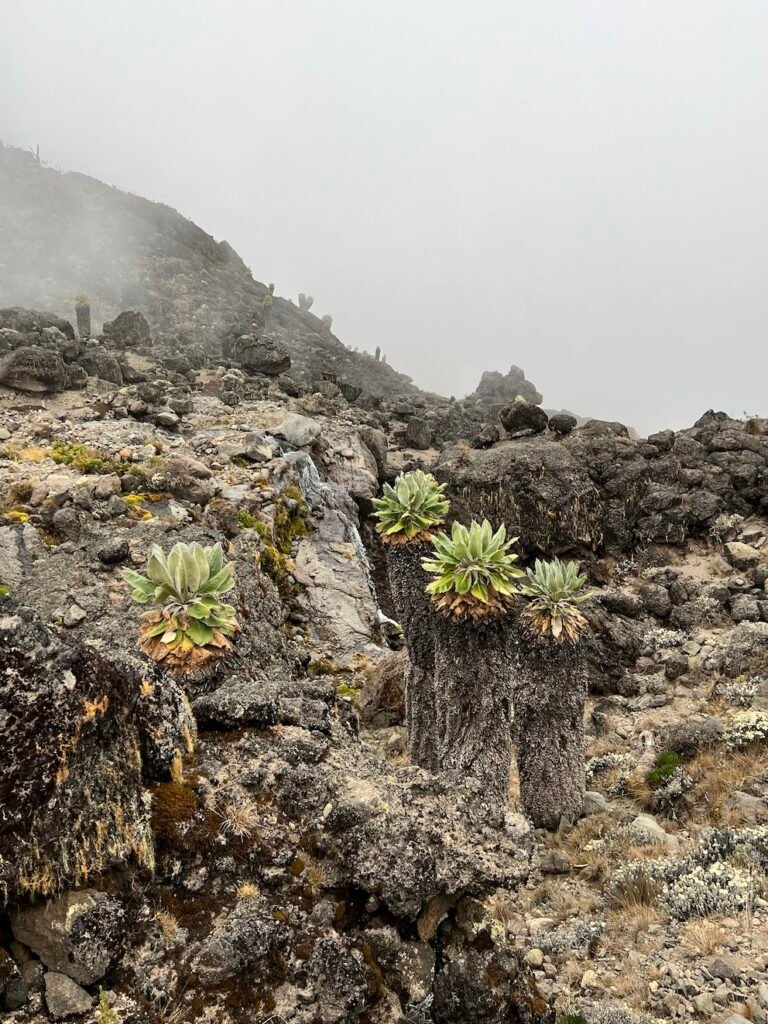
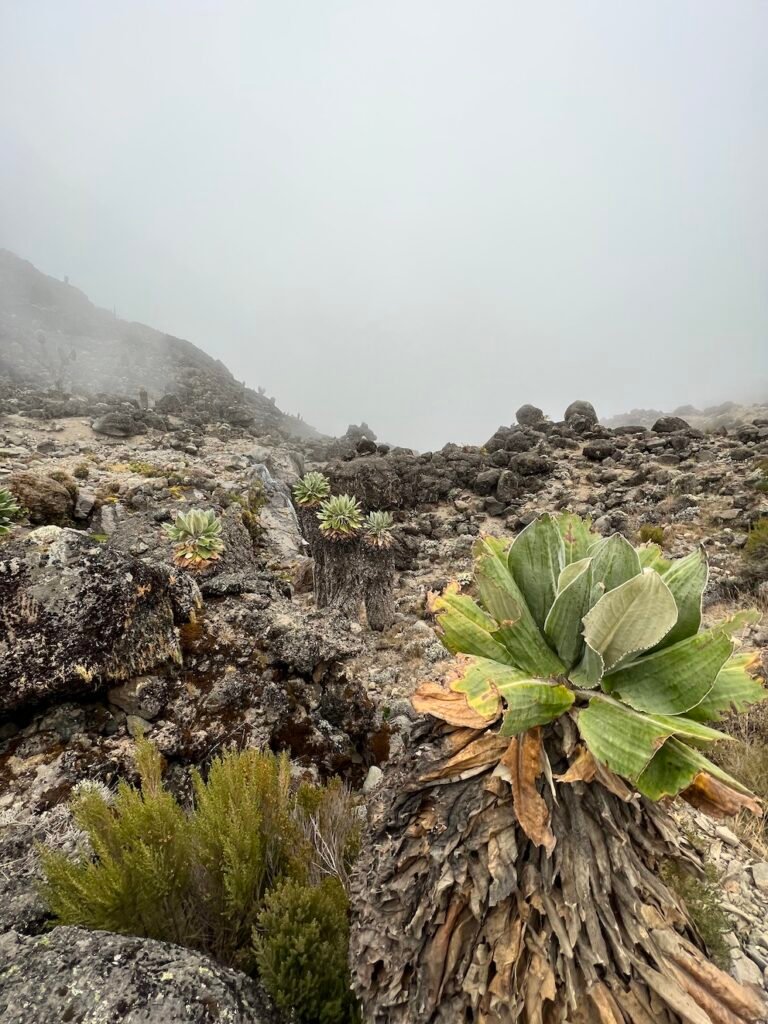
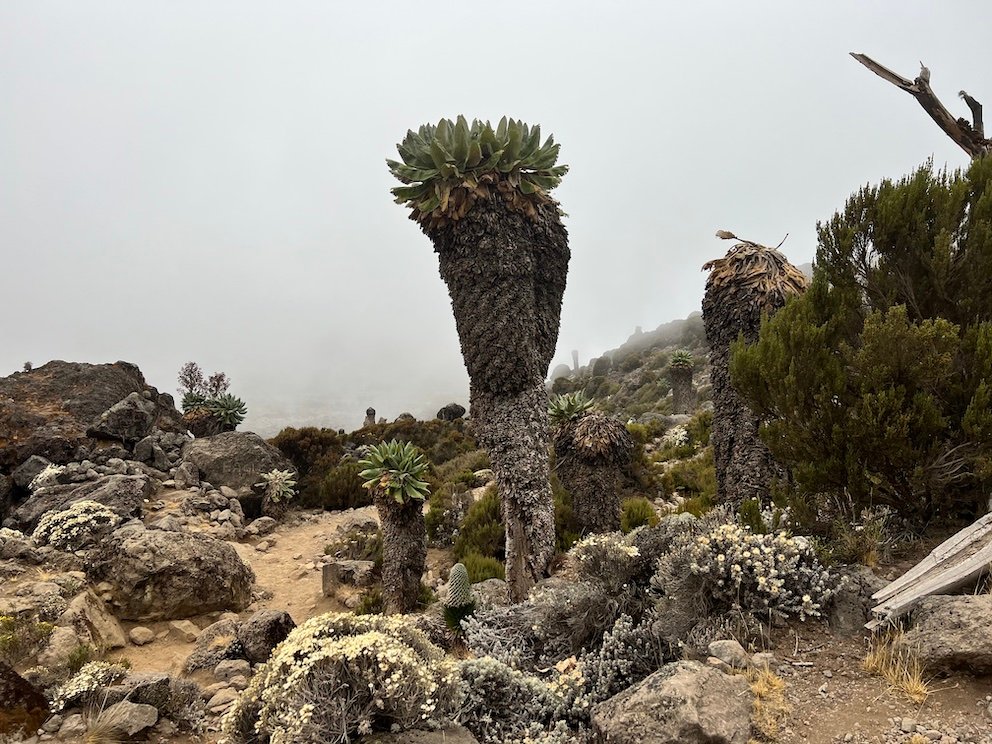
I was delighted to see the father-daughter duo – Amira and Pat – also from Vancouver, whom I met at Springland hotel the morning we departed for our respective treks. Amira and Pat were doing the 7 day Lemosho route and were happy with their trek thus far.
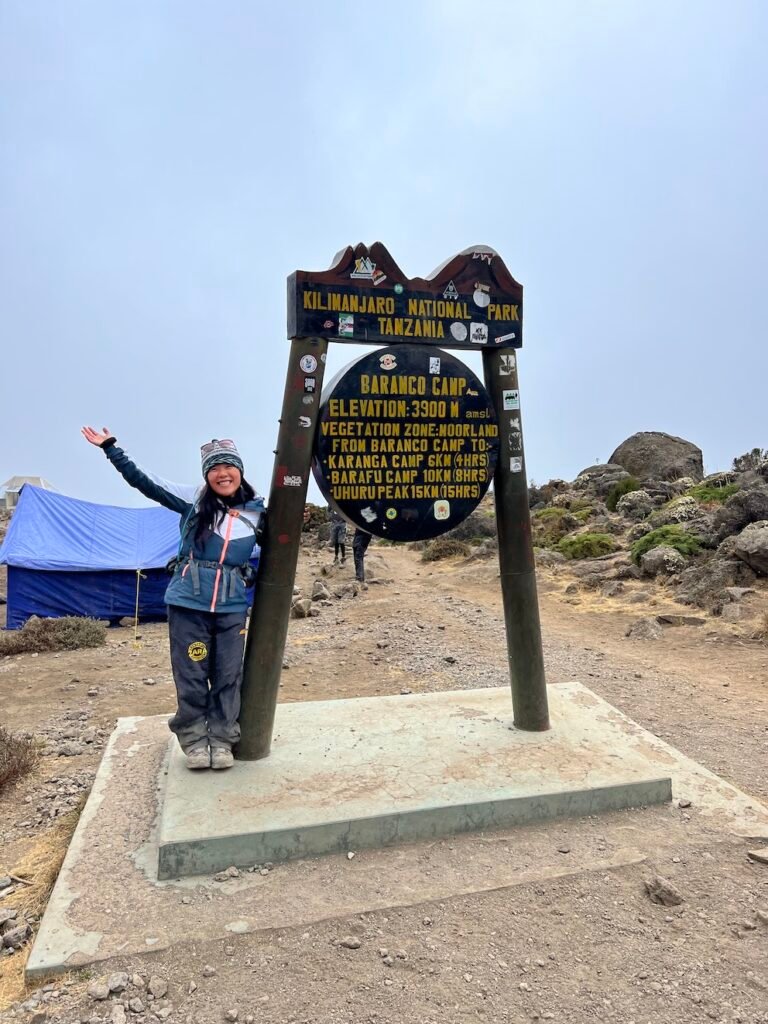
Miraculously, the rain ceased and fog dissipated around dinner time, so we were able to enjoy our beautiful surroundings as we dug into a dinner of rotini with meat ragu sauce and fish. We were also served a delicious leek soup.
Victor came by after dinner to check our vital signs and brief us on the next day. Oxygen saturation was still good at 94%. Heartrate was 98 bpm. While even Alberto was impressed with my oxygen saturation this high up the mountain, it appeared my resting heart rate is rising each day, but Victor said it was normal as my body adjusts to the higher elevation.
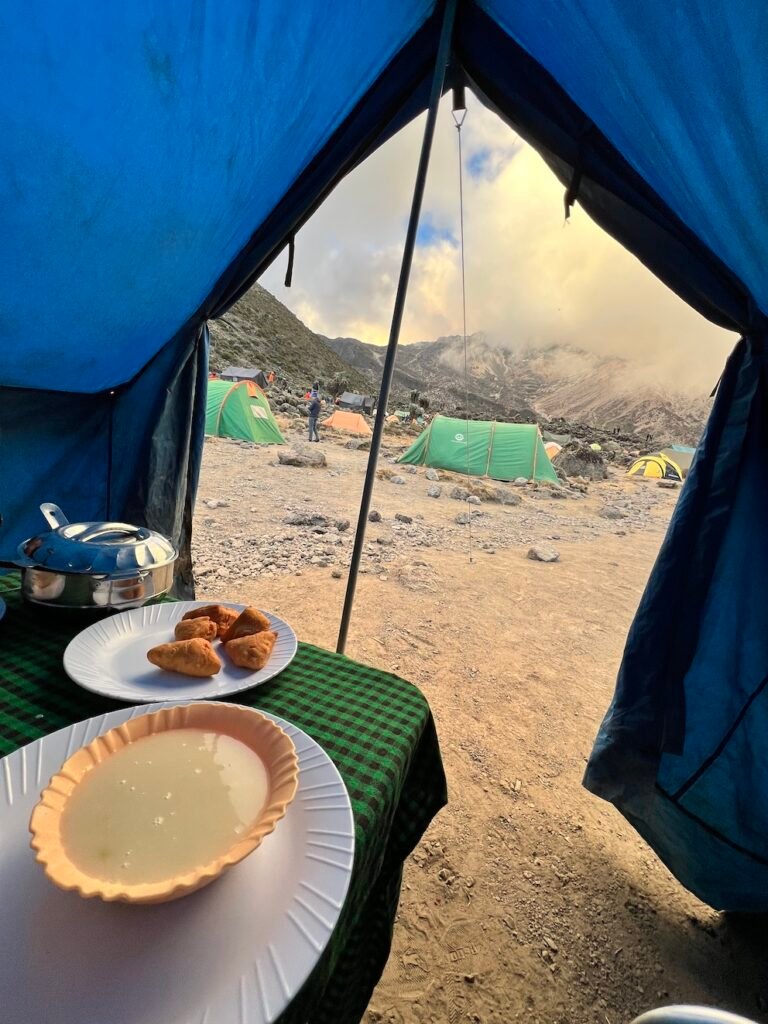
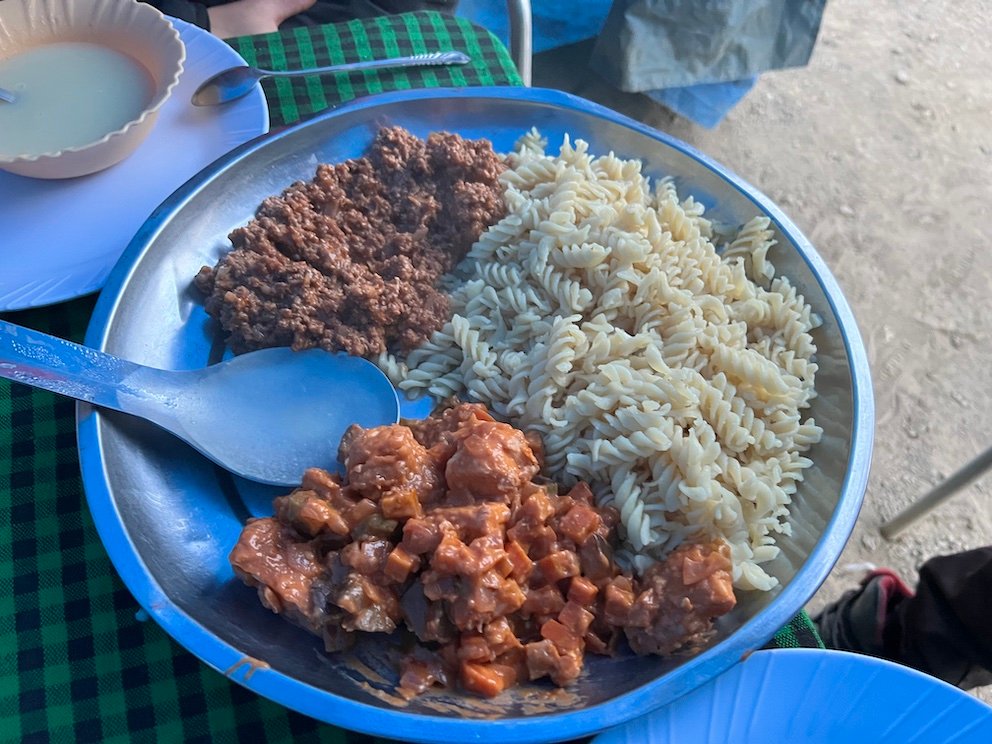
Victor went through the next days’ itinerary with us after taking our vitals. It was going to be a big day tomorrow. We would get a wake-up call at 6am. Finish packing by 6:45am and have breakfast – and leave by 7:30am.
Leaving earlier would be important as there was bound to be a traffic jam of 6-day route-rs like ourselves all trying to get to Barafu base camp as early as possible to get as much rest as possible before leaving for the summit at midnight.
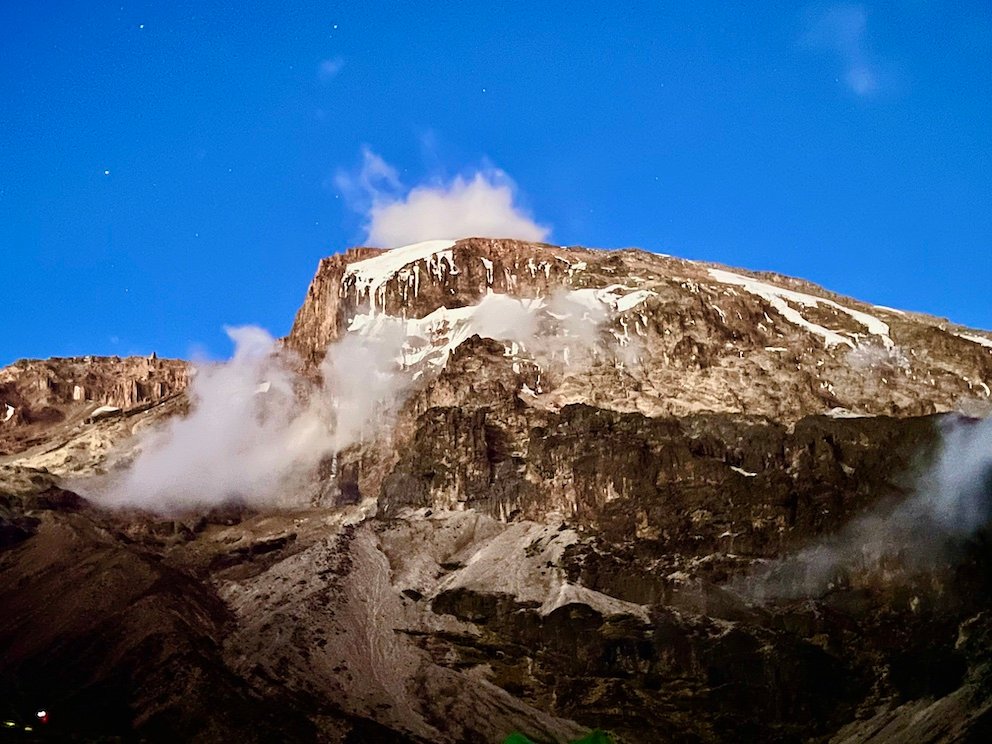
Tomorrow almost felt like it was two days strung into one – where you also summit the tallest peak in Africa some-time in-between. That is actually what it is. There’s no way to make summit day any less painful – no matter which route you take or how many days you hike, summit night the same for all of them: Arrive at Barafu base camp around 2pm, sleep for a few hours, dinner served at 5pm. Sleep. Wake up at midnight. Climb 6-7 hours to Uhuru peak. Climb back down to Barafu base camp by around 12noon.
For us doing the Machame route, after having lunch at Barafu base camp, we still need to descend another 1600m to Mweta camp before we can finally lay our heads down. Starting tomorrow, the real hard work begins. Thank goodness they’ve been stuffing us full of so much food these past few days – we’re going to need the energy for the next 48 hours.

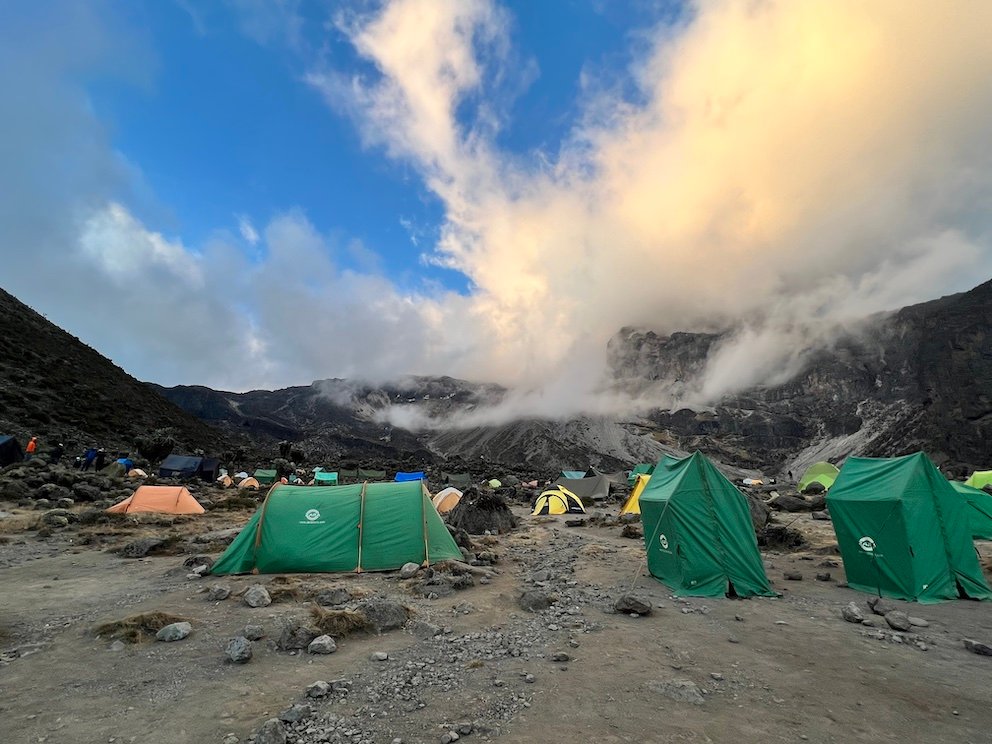
After dinner I went straight to my tent around 8pm, it was so chilly that I brushed my teeth inside the tent. I plugged my phone into my battery pack to charge. I noticed that in the cold – even when I slept with the phone inside my sleeping bag – the phone would lose 10% of its charge if I left it on overnight – so I made a mental note to shut the phone off before sleeping to preserve precious battery.
I decided to put tights that I wore underneath my rain pants today on underneath my sleep pants for extra warmth. They were ice cold when I picked them up. So I sat on them like a hen sits on her eggs to warm them up before daring to put them on. After layering up for bed I tested how I was going to wear my backpack to the summit. Reports abound about camelback tubes freezing on summit attempts so I resolved I would wear the tube over my shoulder inside my jacket to keep it from freezing – why am I doing this again?? After a bit of journaling I finally was in bed – the longest day of my life and the ceiling of Africa, here I come!
